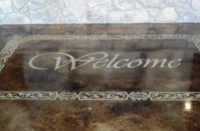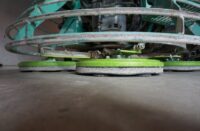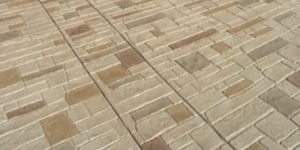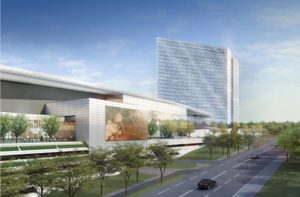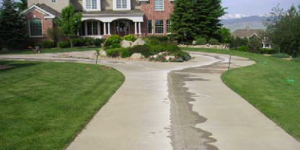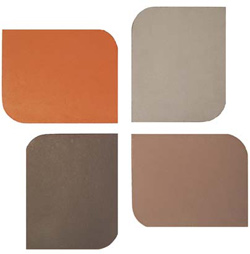 As part of its effort to improve the environment through green product offerings, L.M. Scofield Co. has developed Solachrome Integral Coloring Treatment for High-SRI Concrete. The patent-pending color additive is specially formulated to reduce the urban heat island effect, which occurs where pavemslaent and buildings have taken the place of vegetation that would have kept the ground cool.
As part of its effort to improve the environment through green product offerings, L.M. Scofield Co. has developed Solachrome Integral Coloring Treatment for High-SRI Concrete. The patent-pending color additive is specially formulated to reduce the urban heat island effect, which occurs where pavemslaent and buildings have taken the place of vegetation that would have kept the ground cool.
As its full name suggests, Solachrome addresses the solar reflectance index (SRI), which the U.S. Green Building Council uses to predict a given surface’s temperature in full sunlight. The higher the SRI number, the cooler the surface should be, with 100 being a typical white surface and 0 being black.
One key to keeping unshaded concrete cool is to increase the reflectivity of the surface. Solachrome utilizes pigments with high reflectivity in certain ranges of the solar spectrum, which reduces the amount of solar energy that is absorbed and turned into heat. The end result is a cooler surface.
The development process came about when Scofield began conducting extensive SRI testing of its Chromix Admixtures for Color-Conditioned Concrete and its Lithochrome Color Hardener after the USGBC incorporated mitigation of urban heat islands into the LEED program.
“Chromix Admixtures and Lithochrome Color Hardener both offer many colors with SRI values that meet or exceed LEED requirements,” says Cam Villar, director of marketing for Scofield. However, they knew they could do better, he says, and the result is Solachrome.
“One of our most popular Chromix colors is Dark Gray, which has an SRI of 10,” he says. “The darkest gray in Solachrome has an SRI of 30.”
The two colors are almost identical, but after 20 minutes under a heat lamp, the concrete with Solachrome was almost 30 degrees cooler than the sample treated with Chromix.
In all, there are 44 colors available in the Solachrome line. Twenty-four are available for use with a medium-gray cement, and an additional 20 are available for use with a white cement. Colors used with white cement have higher SRI numbers. Overall, values range from 30 all the way up to 103.
Ideal uses for Solachrome include hardscapes, parking areas, plazas and sidewalks. It can also be used in vertical applications, where it could significantly cool down exterior walls on buildings.
Not only does Solachrome provide color and cooling properties to concrete, but Scofield has incorporated an SRI-restoring characteristic into most colors that, in the presence of sunlight and moisture, will actually break down many organic surface contaminants that can reduce solar reflectivity.
“The vast majority of contaminants are particulate matter from the air,” Villar says. “Those organic pollutants have been shown to reduce concrete’s SRI over time. Solachrome’s SRI-restoring feature helps the concrete maintain its SRI longer than conventional coloring methods.”
www.scofield.com
